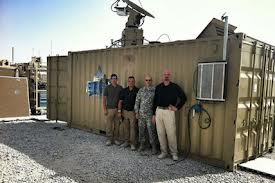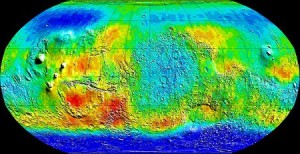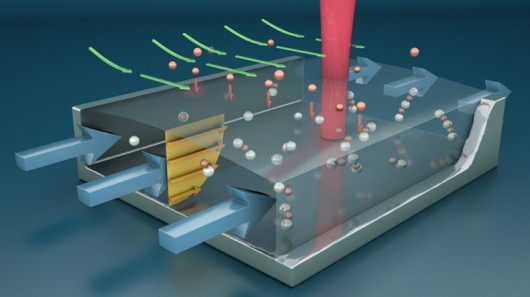This week’s five stories look at:
- Deploying 3D Printers in the Military Rapid Prototyping;
- A New Device To Replace Man’s Best Friend When Hunting Bombs;
- Poo to Power Microsoft’s Latest Data Center;
- Mars No Worse Than Living in Low-Earth Orbit and Guess What, There’s Water;
- Small Seaweed Biorefineries Could Power Developing World Communities.
The U.S. Army Deploys 3D Printers in Afghanistan for Rapid Prototyping
When the British entered the first two world wars they began with an expeditionary force. That meant organizing men and supplying all the materials of war and deploying them remotely, in their case across the English Channel in the fields of Northern France. Today when the U.S. army deploys to wars in remote locales the exercise is somewhat the same. Everything the army needs is put on ships and airplanes and transported to places like Afghanistan. And when you consider that the American military has its members serving in more than 100 countries around the planet, that means providing material support on a significant scale.
What if some of the material supply could be managed differently? Complex technology like guns, tanks, and aircraft can breakdown but if you could locally manufacture replacement parts you can maintain these technologies in the field. Enter 3D printers and the Expeditionary Lab, a 6 meter (20 feet) container containing 3D printers, plasma cutters and industrial computer numerical control (CNC) machines. The first two have been deployed in Afghanistan. A third is deployed in the United States for use during natural disasters. The benefit, the ability to manufacture replacement parts from computer-generated schematics. The process is being called direct digital manufacturing and it is hoped that even custom prostheses can be made on site to replace a soldier’s lost limb.
And the army is not alone in pursuing 3D printing. The US Navy is looking at micro-robots with 3D printing capability for manufacturing what they refer to as “novel materials and structures.” And the US Air Force is using 3D printers to create prototypes for airframe components and spare parts.

A Device with a Nose Like a Dog
Bomb and drug detection sniffing is something dogs do very well. You see them at airports and customs checking out luggage, containers, packages and people. Security companies consider them the gold standard, particularly for detecting explosives, better than any technology we humans have created to date. So it has remained a dauntless challenge for engineers to come up with a detector as capable.
A team of mechanical and chemical engineers from the Santa Barbara campus of University of California may have come up with something, a detector the uses microfluidic nanotechnology. They describe their patented device as a mechanical bomb sniffer even more precise than the nose of a dog. Published results of their work recently appeared in the Journal of Analytical Chemistry.
The technology designed to replace man’s best friend combines a microchannel 20 times thinner than a human hair with a surface-enhanced Raman spectrometer powered by a laser to capture and identify molecules of gas given off by ingredients in explosive devices. The device can be modified to detect molecular levels of narcotics, smoke, gases given off by food spoilage, or even disease detection through analysis of someone’s breath.

Microsoft to Power a New Wyoming Data Center Using Methane from Waste
One report referred to this announcement as “mixing computing with crap,” but Microsoft’s latest data center plans to use off-grid power derived from methane gas from decomposing sewage. That methane will be extracted from the Dry Creek Water Reclamation Facility in Cheyenne, Wyoming.
Microsoft calls its zero-carbon technology, the Data Plant, combining the virtues of a power plant with the energy demands of a data center.The design filters out trace contaminants. Then a Molten Carbonate Fuel Cell converts the methane and CO2 into electricity without combustion. Finally the energy created powers the data servers. Electricity surpluses get shared with the wastewater treatment facility. The heat generated by the server farms is also recycled to keep the micro flora used in waste water treatment nice and warm without having to use additional energy.

Is Mars Hazardous to Your Health?
Not according to the latest findings from Curiosity, the latest Martian Rover, and from what we have learned from other spacecraft and robots studying the planet. Sampling of radiation levels at Gale Crater indicate that levels are no worse than that experienced by astronauts on the International Space Station. That means concerns about radiation exposure have been somewhat alleviated although solar storms will still present a problem.
The answer to how human explorers of Mars can cope with that potential hazard is also being investigated by orbiting spacecraft from the European Space Agency and NASA. What they have discovered is a landscape that may have potential caves which could be used for human habitation permanently or as temporary shelters during solar storms. Surface materials could also be used to build shelters capable of withstanding cosmic radiation as well.
And what have they discovered? Significant amounts of water present in the form of permafrost, subsurface frozen water and polar ice, more than was ever thought previously to exist. In the map of Mars below the blue areas show the presence of hydrogen with the deepest blue containing 20 to 50% ice by mass.
The existence of water solves many problems. Hydrogen can be extracted to make rocket fuel for the return home, and it can also be used as an energy source while on the planet surface. Oxygen from the water can be breathed. Water plus atmospheric carbon dioxide can be used to grow plants for food.
Of course none of these discoveries answers the challenge of what to do about radiation shielding on the long voyage to and from Mars. Nor have we yet to overcome the challenge of developing a working closed model for a self-sustaining environment that would keep humans alive throughout a potential 6-month journey to and from the planet.

Biorefineries Could Power Towns in Developing World Countries
In a paper presented at the International Mechanical Engineering Congress in Houston, Texas this month, researchers proposed a design for expandable biorefineries that would use marine macro algae as a feedstock for creating biofuel. Each biorefinery would cultivate the macro algae over an area of 30 hectares (almost 75 acres). This presents a problem in the Developing World where land that could be growing crops becomes ponds for algae generation. So the researchers have looked at farming the algae at sea.
They have developed a model for a pilot project providing sufficient power for a coastal community of 20,000. They see macro algae as a better biofuel candidate than corn, sugar cane or switch grass because the algae lacks lignin, a complex polymer that gives these other plants their toughness and makes the process of conversion much more difficult. At the same time macro algae answers the issue of lower biofuel conversion rates than experienced currently from containment pond production.

A Postscript
Is there a field of technology that we have yet to cover that interests you? Let me know because this blog site is focused on the contribution that technology can make to help humanity and our planet get through the 21st century and beyond. Thank you for continuing to read my postings and for sending in your questions and comments.
– Len Rosen







